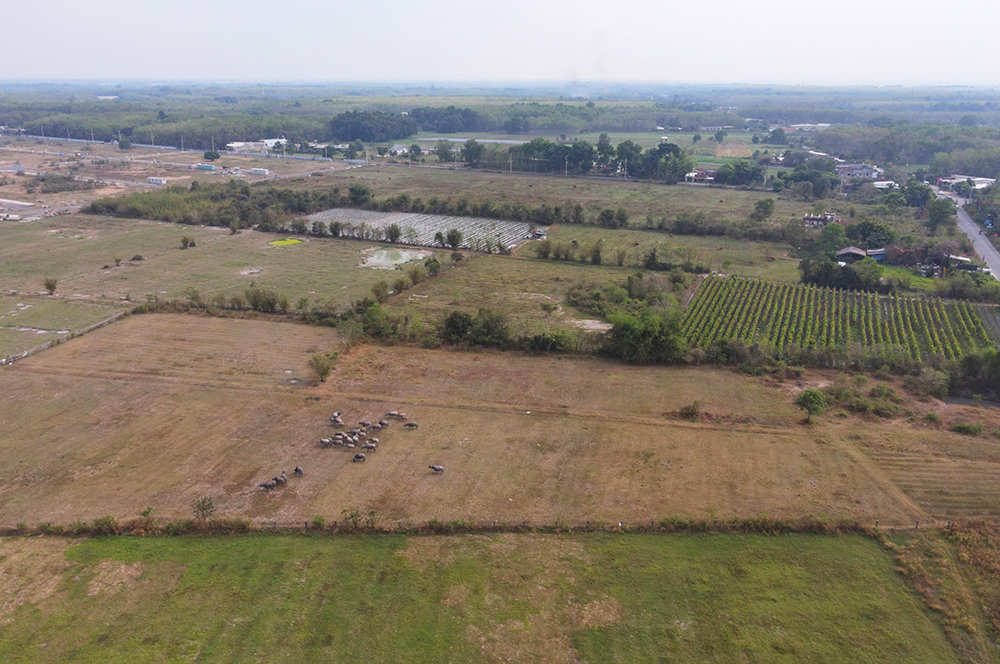With $17 billion promised in principle for various projects, Cu Chi and Hoc Mon districts are looking to develop to their full potential in the coming years.
At an investment promotion conference held last week, Ho Chi Minh City called for and received pledges of $17 billion for 55 projects in Cu Chi and Hoc Mon, about 90 minutes’ drive from the downtown area.
This is the highest investment ever that the two districts, which lie in the city’s north-northwest, have attracted.
Tran Van Khuyen, Party chief of Hoc Mon District, said that for several years now, the two districts have not been able to develop to their potential. Hopefully, these pledges will become a driving force for this to happen, he added.
However, he cautioned that investment pledges were just the beginning. Investors will not be able to implement any of the projects if plans in both districts were not adjusted to accommodate them properly.
Outdated plans
He said the district’s development plan, approved in 2010, did not match the current situation.
Nguyen Quyet Thang, Cu Chi Party chief, said as the district with the second largest land area in the city, it had a lot of land fund left for development, with agricultural land accounting for nearly 70 percent of the total.
However, the city needs to make adjustments that resolve several development bottlenecks and allows the district to manage and use its land effectively, he said.
Nguyen Viet Cuong, chairman of HCMC-based Phu Cuong Group, said the greatest worry in pouring investment into projects in Hoc Mon and Cu Chi districts was legal issues related to the projects.
These issues have made it difficult for them to proactively make implementation plans and make reasonable commitments to customers.
If authorities want businesses to be responsible about the project, they should, in return, be responsible about facilitating the businesses, he said.
“Authorities should treat investors as their clients and need to have frequent exchanges and issue timely guidelines so that the projects can be carried out in time,” Cuong said.
Legal aspects of investment projects should be clear and consistent to avoid situations wherein a project is in line with the law this year but not in the next, he added.
 |
|
Part of the area designated for the Northwest Urban Area Project in Cu Chi and Hoc Mon districts, HCMC. Photo by VnExpress/Quynh Tran |
On paper for decades
In fact, there were many large projects that had already been planned and called for investment but could not be implemented, leaving the two districts underdeveloped, affecting people’s lives, he noted.
More than 20 years ago, a project to build the Northwest Urban Area was launched on an area of more than 6,000 hectares in Cu Chi and Hoc Mon.
The project was meant to become a satellite urban area with commercial, financial, medical, educational and other facilities, changing the face of the city’s northwest region.
However it still remains on paper and as a result, more than 56,000 families living in the project designated area have not been allowed to rebuild or repair their houses for two decades.
In 2004, authorities gave the green light for an investor to build the An Phu Hung Urban Area over 700 hectares in Hoc Mon.
Set to become HCMC’s second Phu My Hung Urban Area, a residential area in District 7 that is home to the biggest South Korean community in HCMC, the project could not complete its site clearance process. In 2016, the city administration decided to cancel the project.
The Saigon Safari Park project spread over 457 hectares in Cu Chi has not been completed after 20 years.
Ngo Anh Vu, director of the HCMC Urban Planning Institute, said the two districts have been underdeveloped for a long time with many projects falling far behind schedule over the lack of investment.
For many years, the city has focused most resources on developing the southern (District 7) and eastern areas (Thu Duc City).
Poor transport infrastructure in the outskirts areas is another reason for investors’ reluctance to commit funds.
The main roads in both districts like the National Highway 22 and provincial roads 8, 9, 12 were constantly overloaded and unsafe and the traffic network in the area remained inadequate, Vu said.
 |
|
National Highway 22 which links Cu Chi and Hoc Mon districts with the rest of HCMC is often crowded. Photo by VnExpress/Thai Anh |
Land fever fears
Vu said the latest investment pledges for the two districts, if not implemented in a timely manner, will generate the risk of land fevers that will create difficulties in compensation and site clearance later. Therefore, the government needs sanctions to force investors to fulfill their commitments in time.
Architect Khuong Van Muoi, former chairman of the city’s Architecture Association, said the latest pledges for $17 billion was a “good start” for Hoc Mon and Cu Chi to transform themselves.
However, for these pledges to become reality, the city and two districts have a lot of work to do. Most importantly, previous mistakes like having approved projects delayed for decades should be avoided, Muoi stressed.
- Reduce Hair Loss with PURA D’OR Gold Label Shampoo
- Castor Oil Has Made a “Huge” Difference With Hair and Brow Growth
- Excessive hair loss in men: Signs of illness that cannot be subjective
- Dịch Vụ SEO Website ở Los Angeles, CA: đưa trang web doanh nghiệp bạn lên top Google
- Nails Salon Sierra Madre
 VnExpress News The News Gateway of Vietnam
VnExpress News The News Gateway of Vietnam





